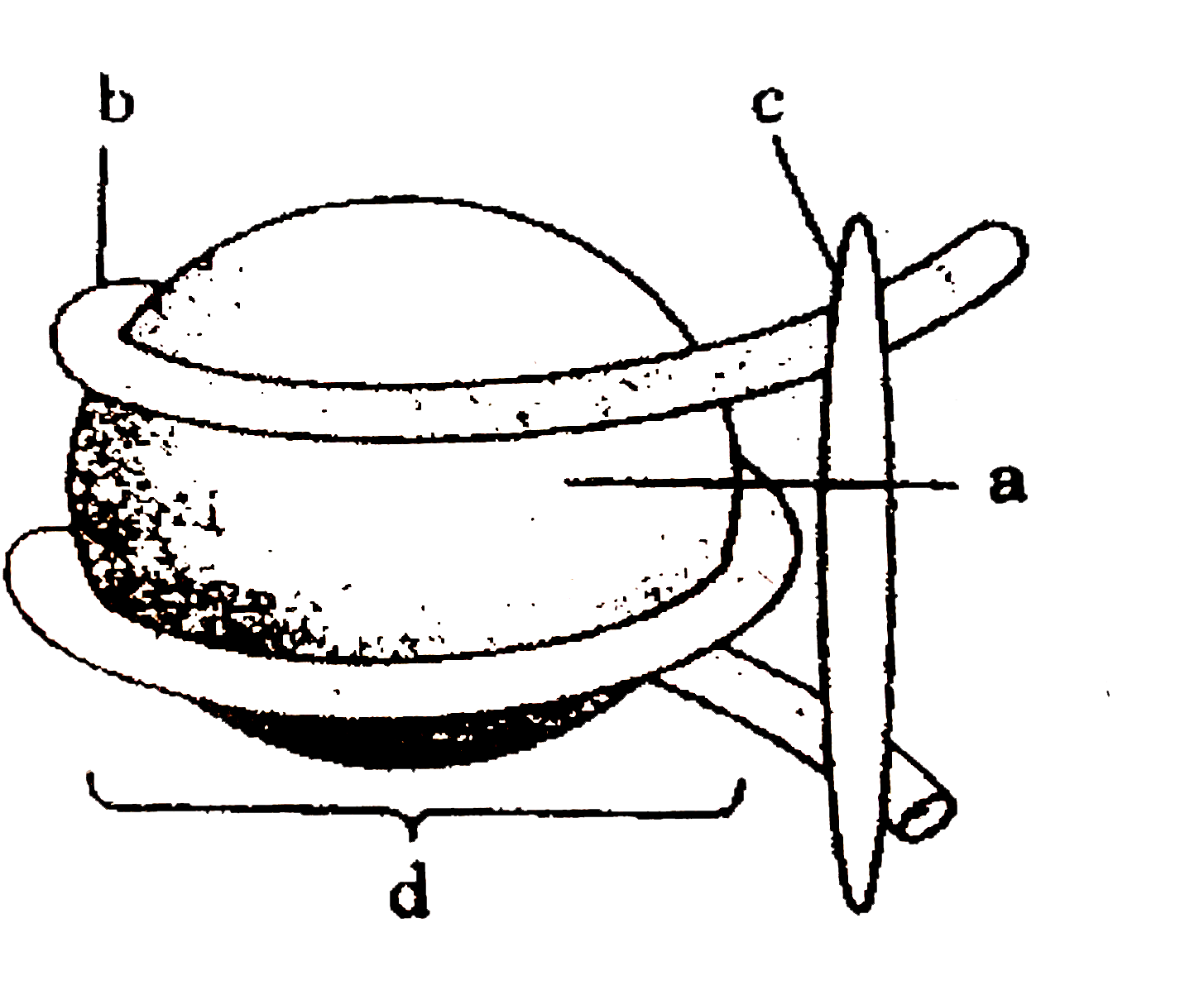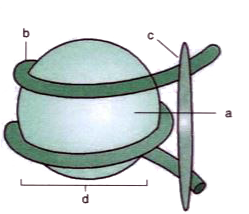In the DNA molecule
There are two strands which run antiparallel one in 5. → 3. direction and other in 3.→ 5.
The total amount of purine nucleotides and pyrimidine nucleotides is not always equal
There are two strands which run parallel in the 5.→ 3. direction
The proportion of adenine in relation to thymine varies with the organism
The correct Answer is:A
Step-by-Step Solution:
1. Understanding the Structure of DNA:
- DNA (Deoxyribonucleic Acid) is composed of two strands that form a double helix. Each strand is made up of nucleotides, which consist of a sugar, a phosphate group, and a nitrogenous base.
2. Identifying the Orientation of DNA Strands:
- The two strands of DNA run in opposite directions, which is referred to as "anti-parallel." One strand runs in the 5' to 3' direction, while the other runs in the 3' to 5' direction.
3. Evaluating the Options:
- Option 1: "There are two strands which run anti-parallel (5' to 3' and 3' to 5')."
- This statement is correct.
- Option 2: "The total amount of purine nucleotides is not equal to the total amount of pyrimidine nucleotides."
- This statement is incorrect. According to Chargaff's rules, the amount of purines (A + G) is equal to the amount of pyrimidines (T + C).
- Option 3: "There are two strands which run parallel in the 5' to 3' direction."
- This statement is incorrect. The strands run anti-parallel, not parallel.
- Option 4: "The proportion of adenine in relation to thymine varies among organisms."
- This statement is incorrect. Chargaff's rules state that the amount of adenine (A) is equal to thymine (T) in any given DNA molecule.
4. Conclusion:
- The only correct statement regarding DNA from the given options is that the two strands run anti-parallel (5' to 3' and 3' to 5').
Final Answer:
- The correct statement is: "There are two strands which run anti-parallel (5' to 3' and 3' to 5')."
---
- DNA (Deoxyribonucleic Acid) is composed of two strands that form a double helix. Each strand is made up of nucleotides, which consist of a sugar, a phosphate group, and a nitrogenous base.
- The two strands of DNA run in opposite directions, which is referred to as "anti-parallel." One strand runs in the 5' to 3' direction, while the other runs in the 3' to 5' direction.
- Option 1: "There are two strands which run anti-parallel (5' to 3' and 3' to 5')."
- This statement is correct.
- Option 2: "The total amount of purine nucleotides is not equal to the total amount of pyrimidine nucleotides."
- This statement is incorrect. According to Chargaff's rules, the amount of purines (A + G) is equal to the amount of pyrimidines (T + C).
- Option 3: "There are two strands which run parallel in the 5' to 3' direction."
- This statement is incorrect. The strands run anti-parallel, not parallel.
- Option 4: "The proportion of adenine in relation to thymine varies among organisms."
- This statement is incorrect. Chargaff's rules state that the amount of adenine (A) is equal to thymine (T) in any given DNA molecule.
- The only correct statement regarding DNA from the given options is that the two strands run anti-parallel (5' to 3' and 3' to 5').
- The correct statement is: "There are two strands which run anti-parallel (5' to 3' and 3' to 5')."
Topper's Solved these Questions
- BOOK - AAKASH SERIESCHAPTER - MOLECULAR BASIS OF INHERITANCEEXERCISE - Exercise-III (Previous AIPMT/NEET Questions) (AFMC)5videos
MOLECULAR BASIS OF INHERITANCE
- BOOK - AAKASH SERIESCHAPTER - MOLECULAR BASIS OF INHERITANCEEXERCISE - Exercise-II (DNA finger printing)10videos
MOLECULAR BASIS OF INHERITANCE
- BOOK - AAKASH SERIESCHAPTER - MINERAL NUTRITIONEXERCISE - Exercise - III52videos
MINERAL NUTRITION
- BOOK - AAKASH SERIESCHAPTER - NEURAL CONTROL AND COORDINATIONEXERCISE - EXERCISE-III( PREVIOUS AIPMT / NEET QUESTIONS)33videos
NEURAL CONTROL AND COORDINATION
Similar Questions
Knowledge Check
- Question 1 - Select One
If the base sequence along one side af a DNA molecule is TTCGA, then the complementary sequence of bases on the other side of the DNA molecule is :
AAAGCTBTTCGACGGTACDUUGCA
A ds DNA is 100 kbp long. The number of nucleotides, number of complete turns in the molecule and the length of the DNA molecule will be:-
View SolutionWhich of the following enzymes cut the DNA molecule at specific nucleotide sequence ?
View SolutionIn the process of recombinant DNA technology, the isolated foreign DNA is inserted into another DNA molecule known as
View Solution(a) What is this diagram representing?
(b) Name the parts a, b and c.
(c) In the eukaryotes the DNA molecules are organized within the nucleus. How is the DNA molecule organized in a bacterial cell in absence of a nucleus?
 View Solution
View SolutionOne chromosome contains one molecule of DNA. In eukaryotes the length of the DNA molecule is enormously large. Explain how such a long molecule fits into the tiny chromosomes seen at Metaphase.
View SolutionA given double stranded DNA molecule is 10000 base-pairs long. The length of this DNA molecule will be :
View SolutionA given double stranded DNA molecule is 1,00,000 base pairs long . The length of this DNA molecule will be
View Solution


